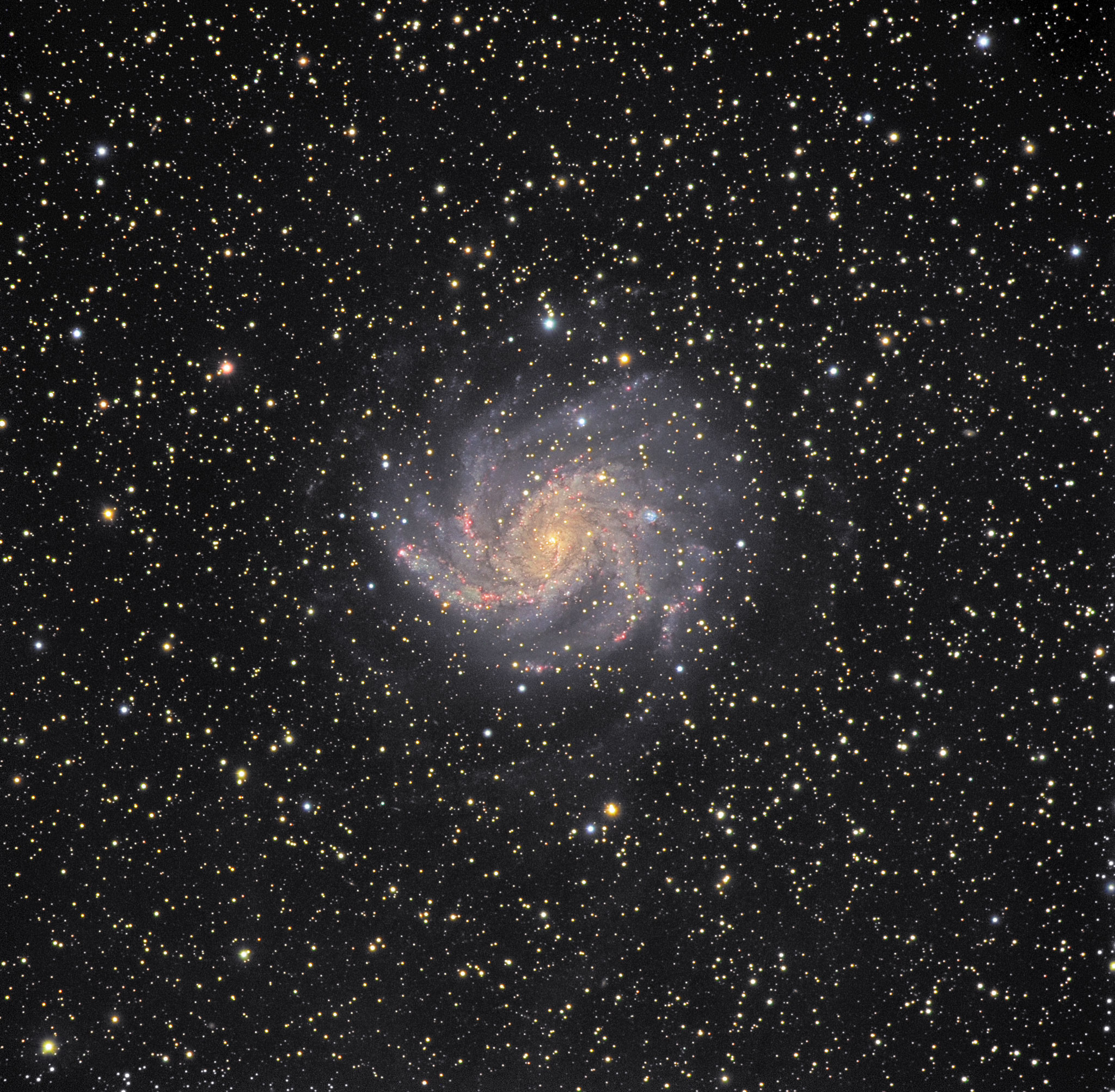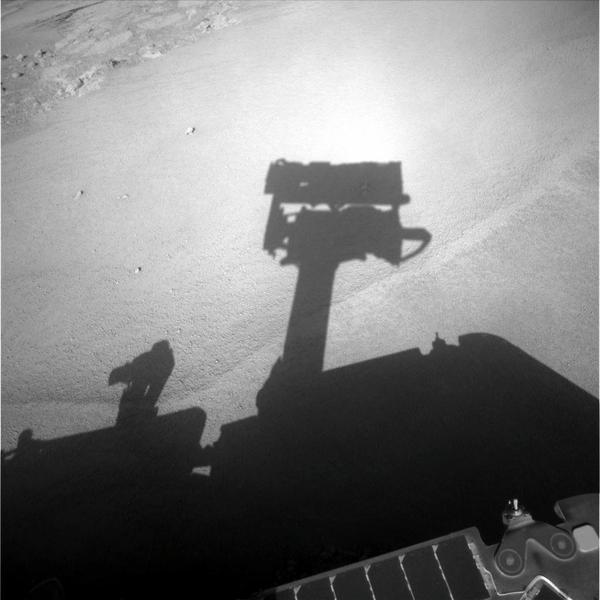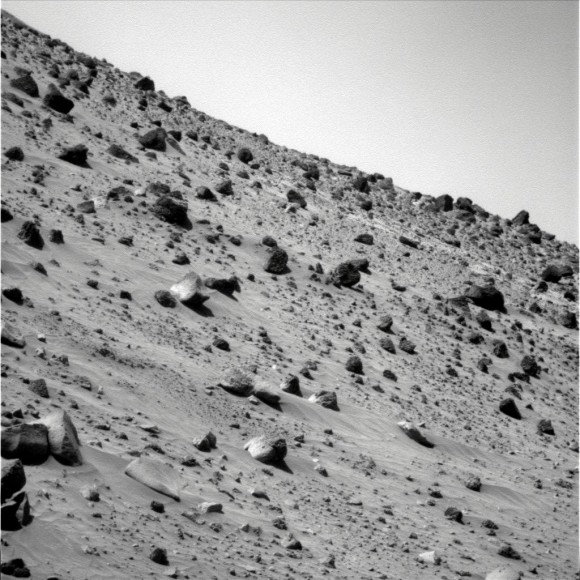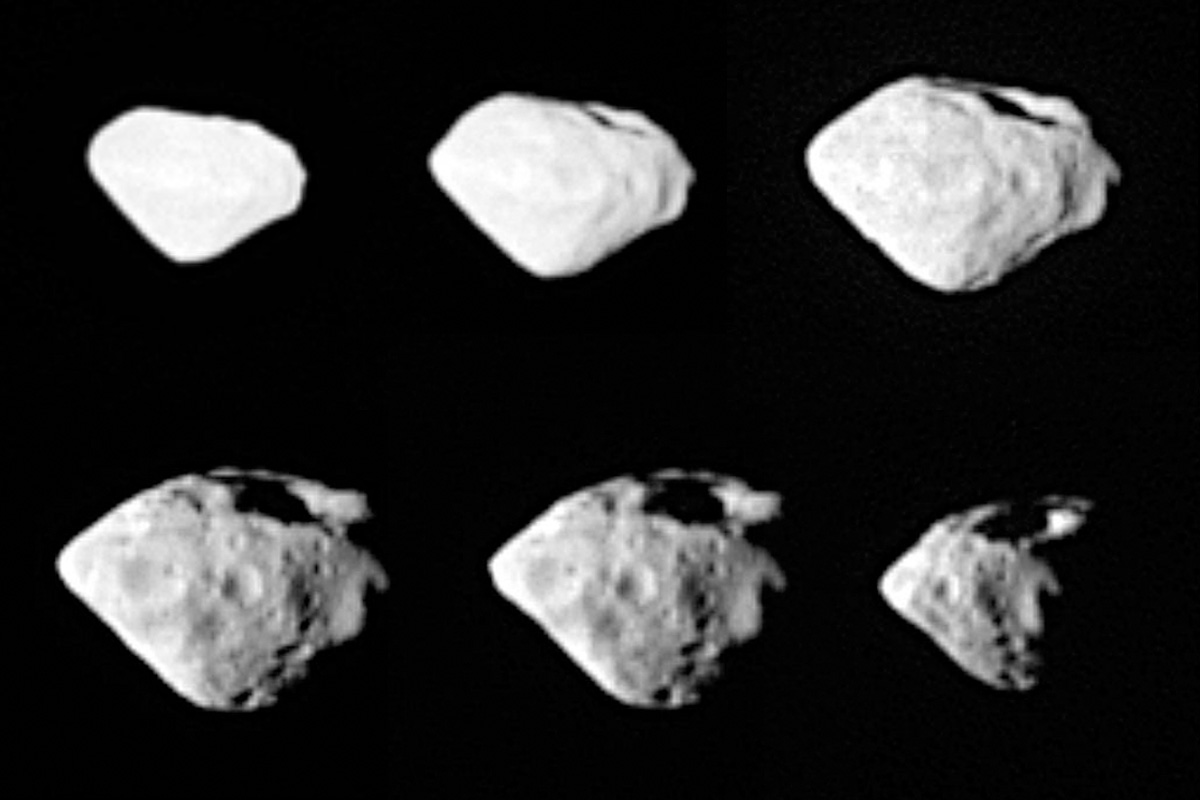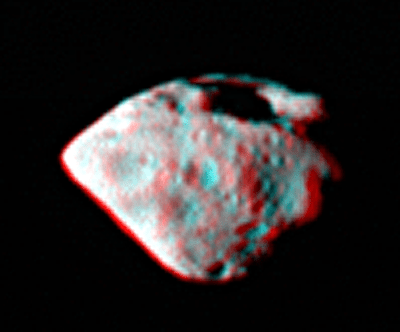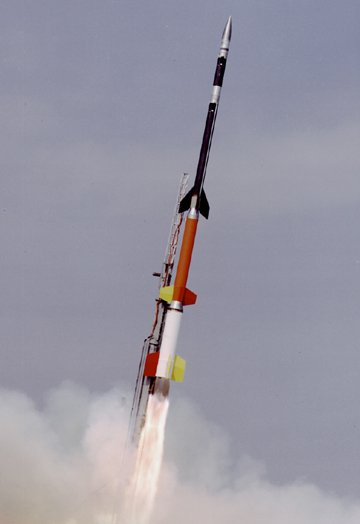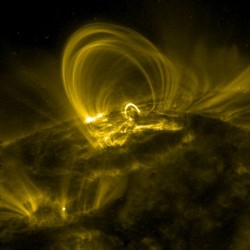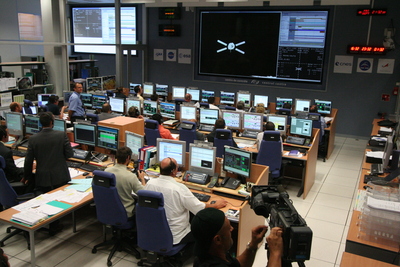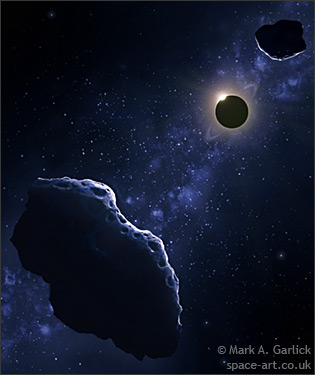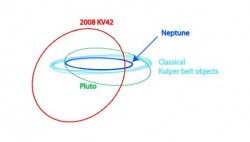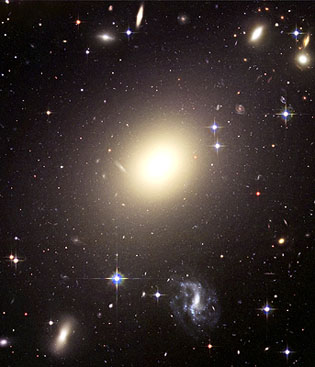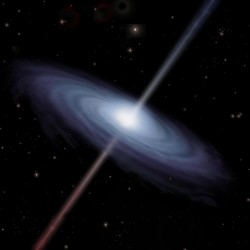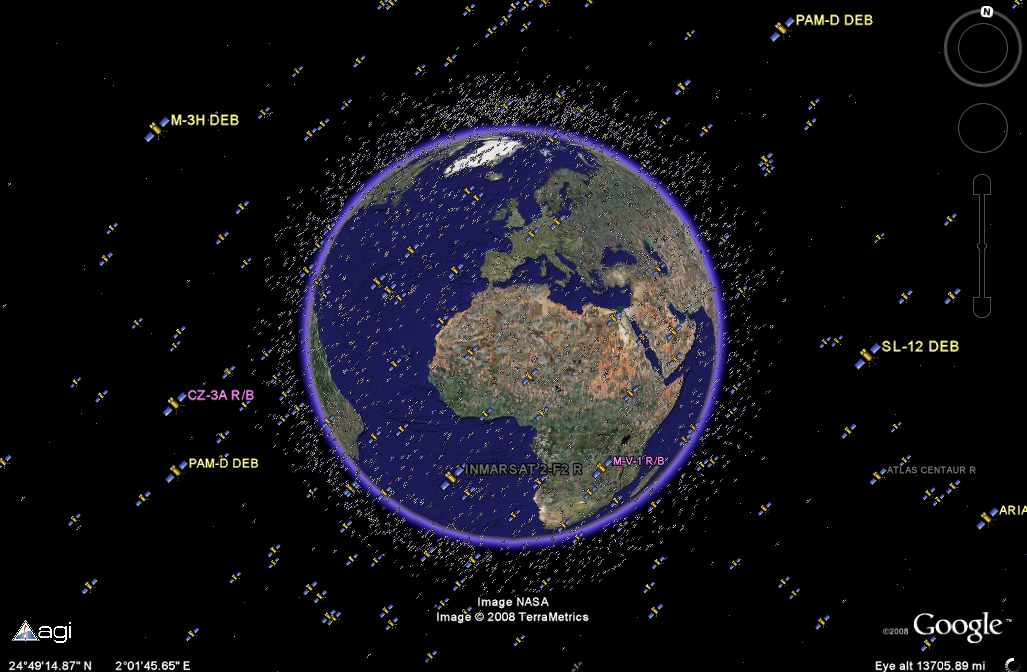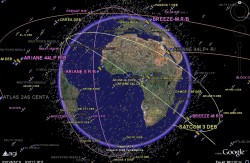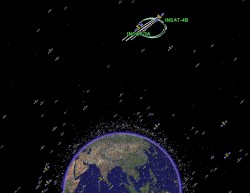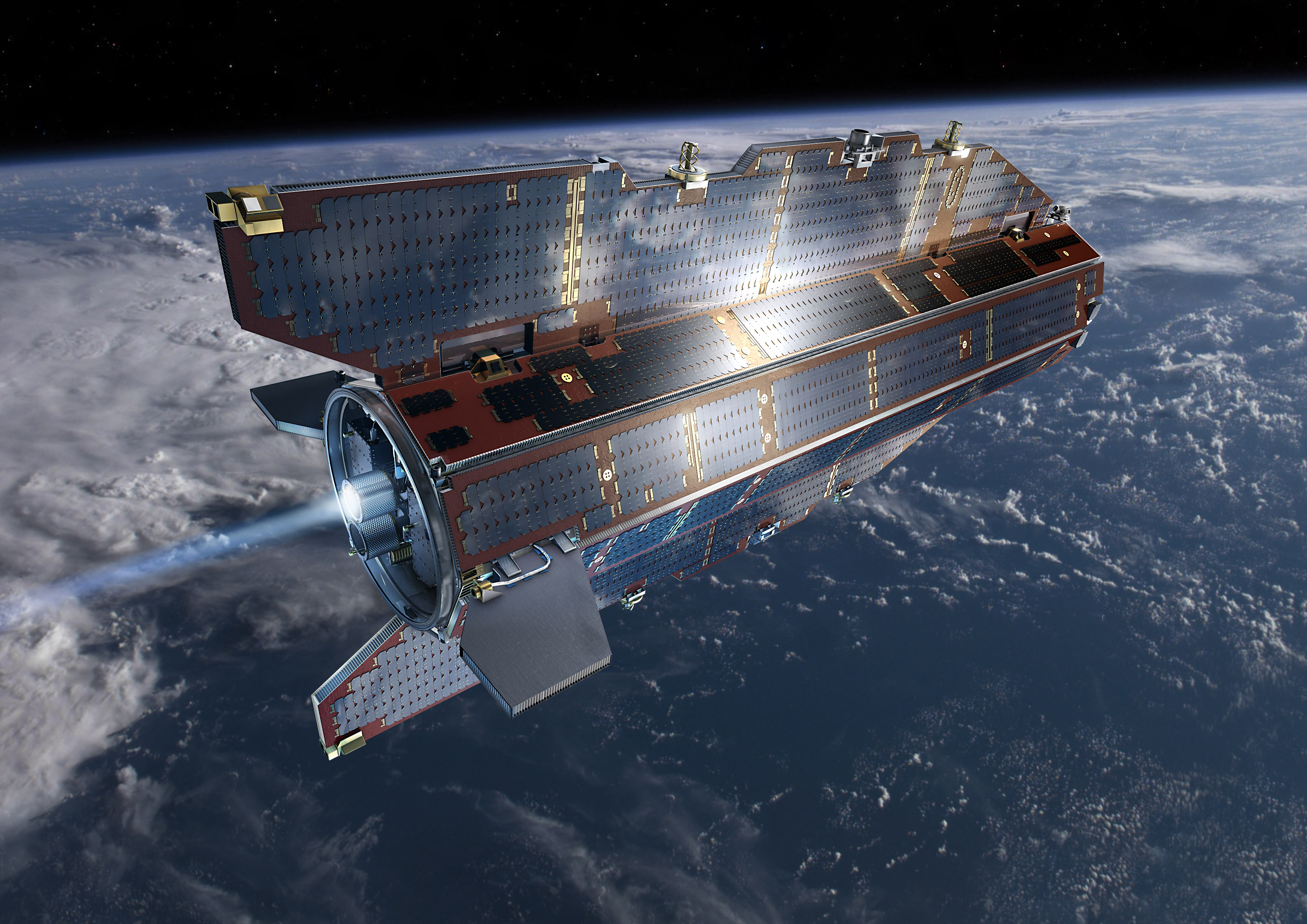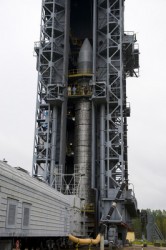[/caption]
It’s time to take a look back to what was happening 210 years ago on the night of September 9th. Sir William Herschel was at the eyepiece of his telescope in Slough. While he was viewing in real time, what he was viewing occurred more than 10 million years ago – the fireworks that ignited in NGC 6946.
At one time, it was widely believed that NGC 6946 was a member of our Local Group; mainly because it could be easily resolved into stars. There was a reddening observed in it, believed to be indicative of distance – but now know to be caused by interstellar dust. But it isn’t the shrouding dust cloud that makes NGC 6946 so interesting, it’s the fact that so many supernova and star-forming events have sparkled in its arms in the last few years that has science puzzled! So many, in fact, that they’ve been recorded every year or two for the last 60 years…
Most normally, bursts of star formation happen in galaxies which have nearby companions to lend materials. Yet, NGC 6946 appears to be alone in the field. According to a 2000 study done by Pisano (et al) ” Such gas-rich companions could include material left over from the galaxy assembly process which could persist into the current day around an isolated galaxy such as NGC 6946. NGC 6946 is prolifically forming stars, has a nuclear starburst, and has widespread high-velocity clouds associated with the disc. All of these features could be explained by the accretion of low-mass Hi clouds by NGC 6946. Our survey recovered two previously detected dwarf galaxies associated with NGC 6946, but otherwise found no signatures of interactions in the NGC 6946 system. The companions are small enough, and distant enough from NGC 6946 that they should have minimal effect on the main galaxy. Some tidal debris may be expected due to interaction between the two dwarf galaxies, but none is observed. This could be because it is at low column densities, or because the dwarf galaxies are more separated than they appear on the sky. This study of the system suggests that NGC 6946 is a gravitationally bound system with two dwarf galaxies in stable orbits about the larger primary galaxy.”
But, that was some 8 years ago and 16 events into the past. According to studies done by Eva Schinnerer (et al) in 2006, NGC 6946 has been “Caught in the Act” as a Bar-driven Nuclear Starburst Galaxy. “The data, obtained with the IRAM Plateau de Bure Interferometer (PdBI), allow the first detection of a molecular gas spiral in the inner ~10” (270 pc) with a large concentration of molecular gas (MH2~1.6×107 Msolar) within the inner 60 pc. This nuclear clump shows evidence for a ringlike geometry with a radius of ~10 pc as inferred from the position-velocity diagrams. Both the distribution of the molecular gas and its kinematics can be well explained by the influence of an inner stellar bar of about 400 pc length. A qualitative model of the expected gas flow shows that streaming motions along the leading sides of this bar are a plausible explanation for the high nuclear gas density. Thus, NGC 6946 is a prime example of molecular gas kinematics being driven by a small-scale, secondary stellar bar.”
Now, for the really cool part – understanding barred structure. Thanks to the Hubble Space Telescope and a study of more than 2,000 spiral galaxies – the Cosmic Evolution Survey (COSMOS) – astronomers understand that barred spiral structure just didn’t occur very often some 7 billion years ago in the local universe. Bar formation in spiral galaxies evolved over time. A team led by Kartik Sheth of the Spitzer Science Center at the California Institute of Technology in Pasadena discovered that only 20 percent of the spiral galaxies in the distant past possessed bars, compared with nearly 70 percent of their modern counterparts. This makes NGC 6946 very rare, indeed… Since its barred structure was noted back in Herschel’s time and its age of 10 billion years puts it beyond what is considered a “modern” galaxy.
Science believes bars in galaxies have been forming steadily over the last 7 billion years, more than tripling in number. “The recently forming bars are not uniformly distributed across galaxy masses, however, and this is a key finding from our investigation,” Sheth explained. “They are forming mostly in the small, low-mass galaxies, whereas among the most massive galaxies, the fraction of bars was the same in the past as it is today.” The findings, Sheth continued, have important ramifications for galaxy evolution. “We know that evolution is generally faster for more massive galaxies: They form their stars early and fast and then fade into red disks. Low-mass galaxies are known to form stars at a slower pace, but now we see that they also made their bars slowly over time,” he said. Bars form when stellar orbits in a spiral galaxy become unstable and deviate from a circular path. “The tiny elongations in the stars’ orbits grow and they get locked into place, making a bar,” explained team member Bruce Elmegreen of IBM’s research Division in Yorktown Heights, N.Y. “The bar becomes even stronger as it locks more and more of these elongated orbits into place. Eventually a high fraction of the stars in the galaxy’s inner region join the bar.”
Added team member Lia Athanassoula of the Laboratoire d’Astrophysique de Marseille in France: “The new observations suggest that the instability is faster in more massive galaxies, perhaps because their inner disks are denser and their gravity is stronger.” Bars are perhaps one of the most important catalysts for changing a galaxy. They force a large amount of gas towards the galactic center, fueling new star formation, building central bulges of stars, and feeding massive black holes. “The formation of a bar may be the final important act in the evolution of a spiral galaxy,” Sheth said. “Galaxies are thought to build themselves up through mergers with other galaxies. After settling down, the only other dramatic way for galaxies to evolve is through the action of bars.” (HubbleSite News Release)
Yet the studies of NGC 6946 haven’t stopped. In 2005, Gemini II also took a look at this crazy galaxy. “In order to sustain this rate of supernova activity, massive, quickly evolving stars must form or be born at an equally rapid rate in NGC 6946,” said Gemini North Associate Director, Jean-René Roy. “Its stars are exploding like a string of firecrackers!” And with it in 2007, hydrogen halos… Says Rense Boomsma: “A halo of neutral hydrogen is found around an increasing number of spiral galaxies. It is not well understood how hydrogen halos are formed. The orientation of nearby spiral galaxy NGC 6946 enables us to measure vertical gas velocities in the disk of the galaxy and therefore measure how the gas gets into the halo. We find hydrogen with high velocities toward regions where stars are formed. This correlation suggests that the formation of a hydrogen halo is related to massive star formation. A similar close connection is seen in the nearby spiral galaxy NGC 253. For some hydrogen clouds in NGC 6946 we have indications that they have been accreted from outside the galaxy.”
Will we ever understand everything there is to know about galaxies like NGC 6946? Perhaps not in our lifetimes. However, one of the best parts is knowing that it is a galaxy that you can observe and study with larger backyard telescopes. Located in the constellation of Cepheus (RA 20:34.8 Dec +60:09) and billed at magnitude 8.9 (but beware, it’s low surface brightness!), this small barred spiral will show some structure in 10″ or larger scopes with decent skies. Who knows what your night may reveal?
Our many thanks to AORAIA member, Dr. Dietmar Hager of Stargazer Observatory for the use of this incredible image and the challenge of researching the information!
Link to original full size image.

